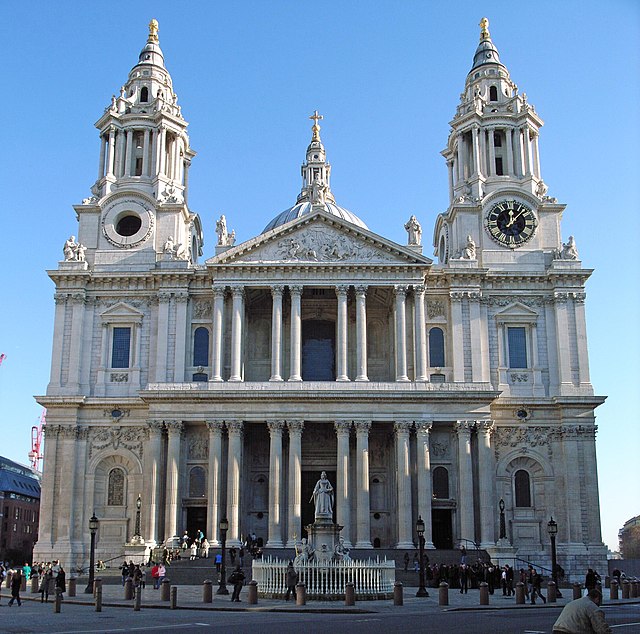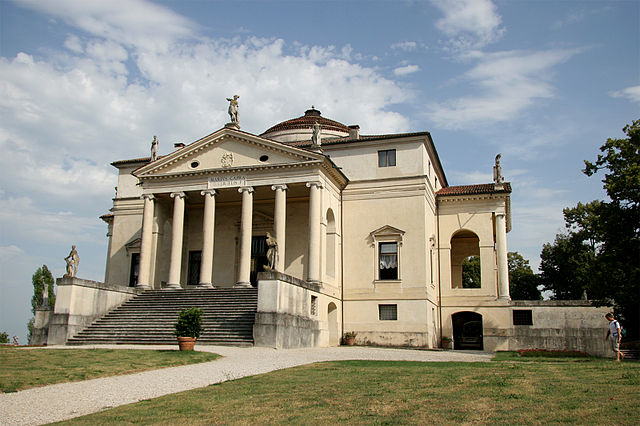English Baroque architecture
English Baroque is a term used to refer to modes of English architecture that paralleled Baroque architecture in continental Europe between the Great Fire of London (1666) and roughly 1720, when the flamboyant and dramatic qualities of Baroque art were abandoned in favour of the more chaste, rule-based Neo-classical forms espoused by the proponents of Palladianism.
St Paul's Cathedral by Sir Christopher Wren, 1674–1711.
The cathedral interior looking east towards the High Altar.
Seaton Delaval Hall by Sir John Vanbrugh, 1718.
Palladian architecture is a European architectural style derived from the work of the Venetian architect Andrea Palladio (1508–1580). What is today recognised as Palladian architecture evolved from his concepts of symmetry, perspective and the principles of formal classical architecture from ancient Greek and Roman traditions. In the 17th and 18th centuries, Palladio's interpretation of this classical architecture developed into the style known as Palladianism.
A villa with a superimposed portico, from Book IV of Palladio's I quattro libri dell'architettura, in an English translation published in London, 1736
Plan for Palladio's Villa La Rotonda (c. 1565) – features of the house were incorporated in numerous Palladian-style houses throughout Europe over the following centuries.
Villa Capra "La Rotonda" (begun c. 1565) – one of Palladio's most influential designs
Basilica Palladiana, Vicenza (from 1546) – loggia with Palladian windows







